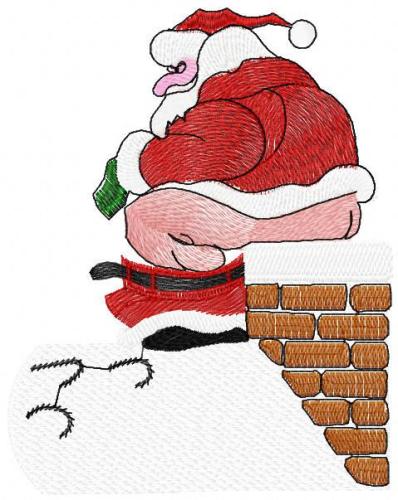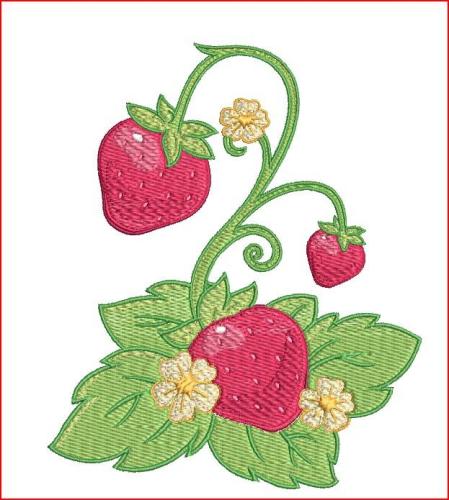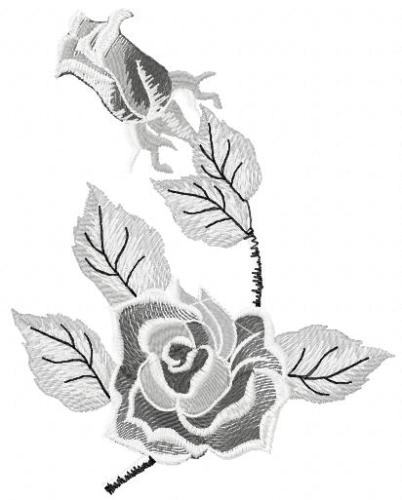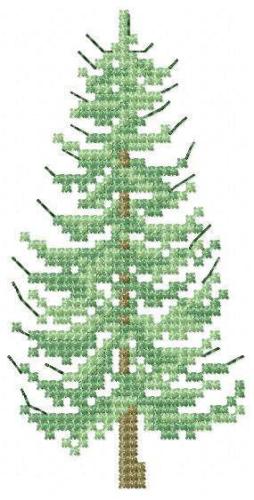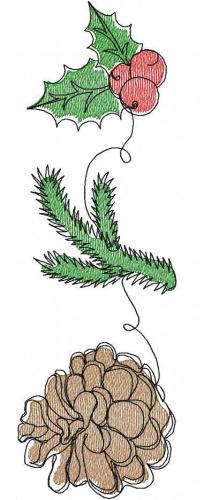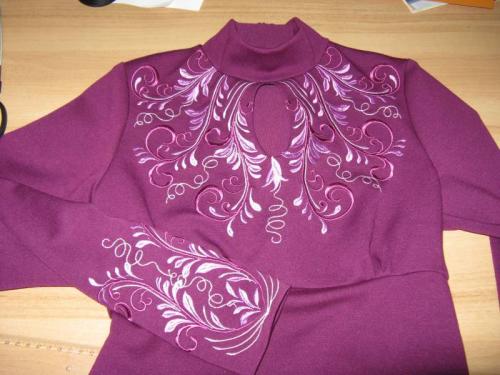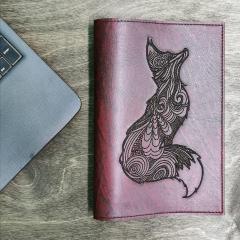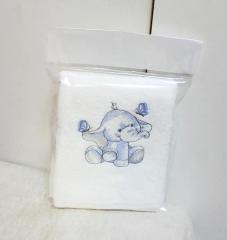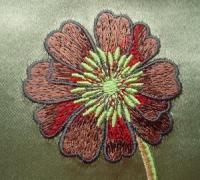
Original text by Marina Belova
Synthetic satin (polyester or acetate) is for some reason considered a rather tricky fabric, prone for puckering and other embroidery distortions, the one that does not tolerate any mistakes. So I decided to check if that was indeed so and why: to me, the fabric seems quite stable and not likely to present any problems. Except that it is very smooth and able to slip out of the hoop; there also can be hoop marks, like on silk or organza.
But first, let's see some general recommendations on working with this fabric:
- When choosing the image or digitizing the design you should not forget to lower the density (0.45–0.5 mm would be OK). Understitching should be kept to a minimum. Although, in you ask my opinion, sparing the underlay seems strange for such a slippery fabric.
- Satin and filling stitches should not be over 3–4 mm in length.
- It is important to stick to the embroidery sequence (from the center onward). In order to avoid gaps, filled objects should be embroidered in one direction and not in multiple crossing ones. Read more about it in my article about digitizing complex shapes.
- The fabric should be hooped together with the stabilizer, trying to keep their contact to a minimum; also, don't forget to wrap the hoop in the fabric or paper prior to that.
- The stabilizer should be of a tear-away middleweight variety. Or, you can use an adhesive stabilizer like Filmoplast + an additional tear-away stabilizer under the hoop to avoid hooping the satin.
- Any kind of threads can be used, but everyone seems to prefer rayon.
- Needles should correspond in thickness to the thread and the fabric. SES light and round needlepoint is preferable.
I created a flower design and embroidered it on the satin. The result, in my eyes, is very good:
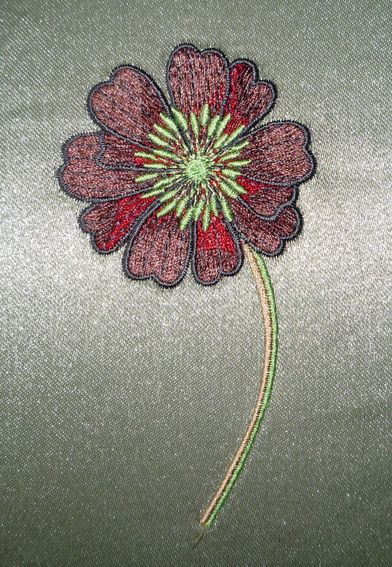
That is, despite the rather dense fill, all puckering and distortion were easily removed with an iron. There was no hoop burn whatsoever on any of these satin pieces. A slightly visible ring on the fabric was easily ironed out in both cases:
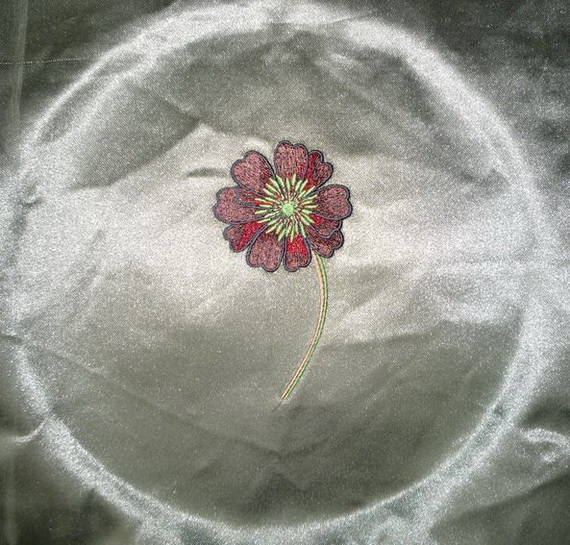
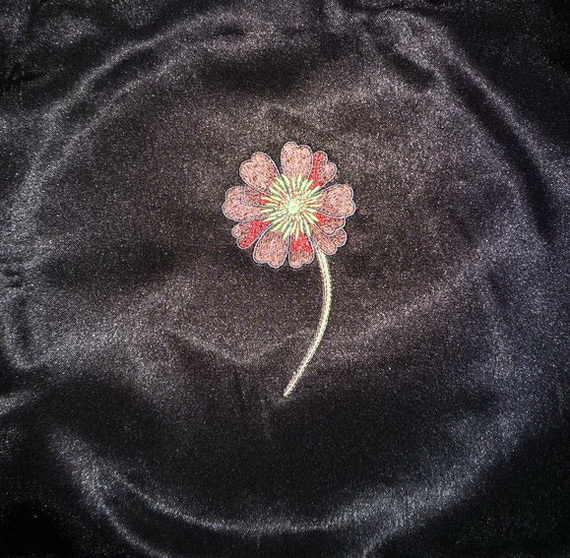
I probably didn't problems with this because I usually wrap the smaller ring of the hoop in order to prevent the fabric from slipping. About this and other little things that make hooping more easy and efficient, read my article called "Hooping minutiae".
The only embroidery defect I saw was shifting of the fibers along the perimeter (which is not a rare occurrence). The embroidery being dense, this defect is visible, but it doesn't bother me:
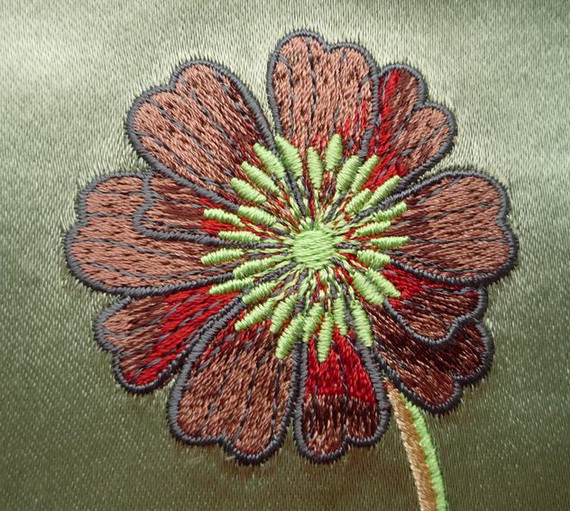
I also want to point out that the design of a lower stitch density, embroidered on the same fabric, puckered as well. But, again, it is not a big problem and can be removed by washing and ironing:
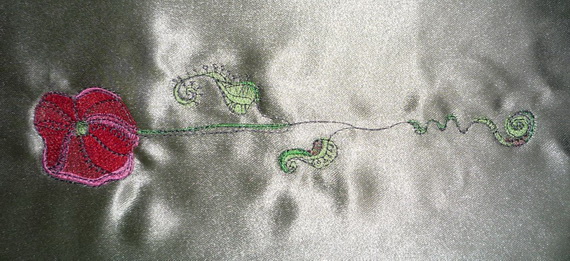
I think, this fabric is nothing to be afraid of. I used the ordinary threads and #70-75 needles with SES needlepoint present on my machine. And one layer of 40 g tear-away stabilizer. But I added temporary spray adhesive because I thought that my fabric, a very fluid one, needed it. I didn't use any additional fabric or paper between the rings, and the front side of the satin touched the hoop.
I digitized the design as usual, except lowering the density in the fills. The resulting density was 15–20% lower than the default one in my embroidery editor. And it is usually set at 5 lines per mm (~ 0.4 mm). To prevent the fabric showing through the stitches, I added density to the underlay.
The bottom line is, the more I embroider on different fabrics, the more intuitive I get considering both the digitizing and embroidery processes.
-
 1
1


